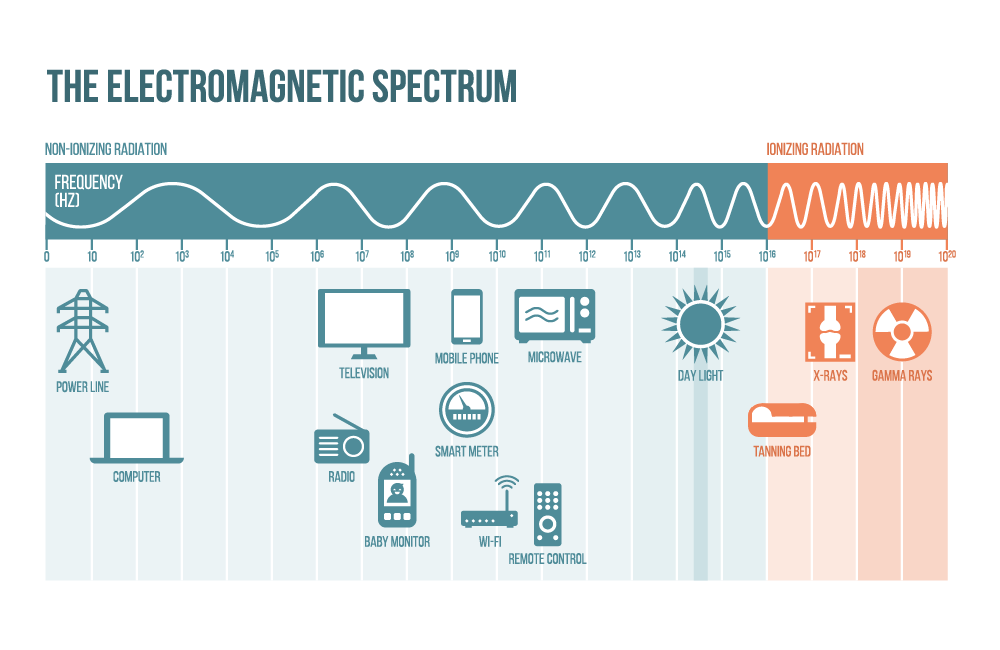Well being Effects of EMF Radiation

The radiation RF-EMF causes damages to DNA and tissue, and can disrupt the blood-brain-barrier. These are real-world effects, and ARPANSA is actively involved within the EHS group, the medical experts as well as researchers. The agency will continue to examine research regarding the health effects of EMF radiation.
DNA damage is caused by RF-EMF
exposed to electromagnetic fields that are created by man (EMFs) can cause DNA damage and other health effects. EMFs can disrupt intracellular ionic concentrations, which are crucial to maintain the electrochemical balance of cells. It can also disrupt cell homeostasis, resulting in DNA damage. Moreover exposure to EMFs is also linked to the production of free radicals and reactive oxygen species (ROS).
Exposure to RF-EMF radiation has been linked to changes in the male germ cell's development. This involves the differentiation of the germ cell into spermatozoa as well maturation of the functional aspect as spermatozoa travel across the epididymis. To determine the effects of RF-EMF on the development of male germ cells, a specifically-designed waveguide machine was designed for the exposure of unrestrained mice to RF-EME with a dose of 2.2 W/kg.
In a study that was conducted recently, researchers found exposure to RF-EME causes oxidative DNA damage in the spermatozoa. Sperm DNA fragmentation increased by 18% following an entire week of treatment and by 23% after 5 weeks. Furthermore, DNA damage in mitochondria was observed by measuring the level of a biomarker, 8-hydroxy-2-deoxyguanosine (8-OH-dG).
However, RF-EMF radiation is not yet recognized as a true carcinogen. But, numerous studies have found that exposure to RF-EMF can affect the integrity of DNA in variety of cell types. In one such study researchers exposed Vero cells with an EMF that was 100Hz, for about 45 minutes. They evaluated DNA damage within 48 hours of exposure to determine whether the exposure affected the integrity of DNA.
The RF-EMF effect causes the heating of tissues

Although the effects of RF-EMF are generally thought as thermal in nature, a few studies have shown that non-thermal influences are also evident. These may be the reason for some of the unresolved observations in the epidemiological study of EMF hypersensitivity. It is therefore important to consider the non-thermal effects when conducting systematic reviews.
The non-thermal effects of the RF-EMF can occur on the cell's membrane. This is a field of research that has been extensively studied. In particular, the electrochemical behavior of cell membranes is being studied. Current understanding suggests that energy from RF-EMF higher than 1 MHz gets transferred to tissues via dielectric and ionic dissipation. Previous theoretical analyses indicated that the energy transferred to tissues could be as high as 200 kV/m.
is emf radiation harmful of tissues are controlled in the form and quantity of water molecules and ions, and other molecules inside the body. This determines how absorbent RF EMR is by different tissues. Tissues with higher conductivity tend to absorb more EMR field and produce more of an effect. This is why the level of heating in tissues is not constant between the outside and inside, but occurs in hot spots. Bone and fatty tissues are less prone to RF heating than other tissues, because they are not as water-based. content.
The extent of the field's penetration depends on the frequency and strength that the electromagnetic field has. Muscle tissue is more able to absorb field energies than the other tissue, and converts it to heat more effectively. Usually, the depth of penetration that RFEMF has is measured as millimeters (mm). However, the higher the frequency, the deeper the penetration.
RF-EMF causes blood-brain barrier disruption
Researchers have found that RF EMF can disrupt the blood-brain barrier, altering sleep patterns and neurotransmitter levels. In addition the impacts of EMF in brain activities are associated with neurodegenerative disorders. For instance, EMF from mobile phones can affect electroencephalogram activity and sleep patterns, as well as the activity of nitric oxide and xanthin oxidase.
Researchers at the Vienna University have studied the effects of exposure to RF EMF on brain cells. They also examined how ELF EMF on brain system. Though the cellular mechanisms involved are not completely comprehended but there is a clear association between ELF-EMF exposure and myelin depletion. This relationship might account for the electro-hypersensitivity symptoms of electro-hypersensitivity. However, there are proven methods for regenerating myelin inside the brain.
Researchers have observed that exposure to frequencies of 900 Mhz EMF enhanced the permeability of BBB and caused an increase in signs of neuronal damage in rats. They also observed increased extravasation of albumin to neurons. Furthermore, emf radiation discovered the following: after about 30 min of exposure to 900 MHz 99mTcMIBI increased its diffusion into the brain. But this effect didn't happen with Evans blue injections.
Despite these findings, RF-EMF does not have a clear method for disrupting the BBB. emf radiation suggests that nonthermal EMF exposure increases erythrocyte membrane permeability, which could alter the BBB and enhance calcium ion efflux. Furthermore, the presence a 99mTc-MIBI radiotracer within the brain has also been linked to increasing the permeability of the BBB.
